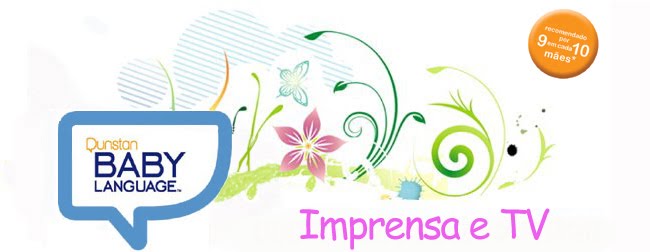
sábado
sexta-feira
RTP directo
segunda-feira
sábado
Na TVI
sexta-feira
Mundo das Mulheres
segunda-feira
Destak
Portugal no coração
quarta-feira
Time Out


After all babies talk, we are the ones who do not understand them
Your baby cries and you don’t know what he wants? Catarina Figueira went to a course that teaches the meaning of crying.
Parents who have raised their children will regret not having known it at the right time. ,Thus those who are trying to survive the first weeks of parenthood, will give thanks to Time Out for showing them that it is possible that babies just a few weeks old emit sounds with meaning, sounds that if decoded by the parents can help them understand when the cry of the baby is of hunger or tiredness, because of cramps or because of what the baby really needs is to burp.
You don’t believe it? Then read on. It all began in 1998 when a 24 year old Australian woman, violinist by profession, had her first child. With a photographic memory for sounds beyond normal, Priscilla Dunstan began, still in the maternity ward, listening to the sounds of her baby in a special way.
According to the violinist, the shrieking notes were not incoherent, by far they were not: they made sense. After years of research validated the method Dunstan, whereby there is a connection between the five sounds emitted by babies and five biological needs. Every sound is a phonetic describer: "neh" means "hunger", "Owh" means fatigue, "Eh" means that the baby needs to burp, "Eairh" has colic and "Heh" that he feels uncomfortable .
The next time that your baby opens his mouth, stare and listen. The first few times it is normal that can only identify the "neh" of hunger, but with time and a little practice you can distinguish the other sounds. What is the advantage? Being able to identify the reason for the crying, it will shorten these periods and to help preserve your sanity as caregiver.
It is precisely to help parents to tune-in in the same sound frequency as their kids and is also for this reason that the classes of baby language given by Ana Garrancho are useful. "The baby is already born with a language, which lasts up to three months. It is up to the parents to know how to interpret it", explains the only Portuguese trainer working with the Dunstan Baby Language method. It was with this objective that Bruno Fonseca and Victoria Nabais, parents of a first time, two month old baby, enrolled in the first class. "She emits sounds, I am the one who doesn´t understand her", Francisca’s father reveals.
The first session describes the Dunstan method, parents learn the easier three words and watch a video with dozens of examples of different sounds. Looks like a whimper but with a little attention you begin to see the audible differences. In the second class you study the last two words and work on the techniques to calm the baby and are given advice on how to breastfeed, give bottle, massage the belly of the newborn, put him to burp or fall asleep. Ana Garrancho advises classes as early as possible in the first weeks of life or when he is still in the mother’s tummy. Makes sense: the earlier, less access to desperation by parents, of the kind "I fed you, I have changed the diaper, I have put you to burp, what more do you want???".
In the end of the classes of the parents take home two DVDs where they can listen repeatedly to dozens of babies with their lungs out, to spread "Nehs", "Eairhs" and "Owhs. The idea is to compare these sounds with the cries of your offspring and realize the similarities. Do not be alarmed if at first you think you hear a "Eh" and even after putting the kid to burp he remains silent. The sound of the physical discomfort is very similar and may confuse. Do not give up and then rewind the DVD. If distrust still looms on you mind, know that Oprah Winfrey has talked about the technique developed by Priscilla Dunstan on one of her programs.
http://www.timeout.pt/news.asp?id_news=3134



















